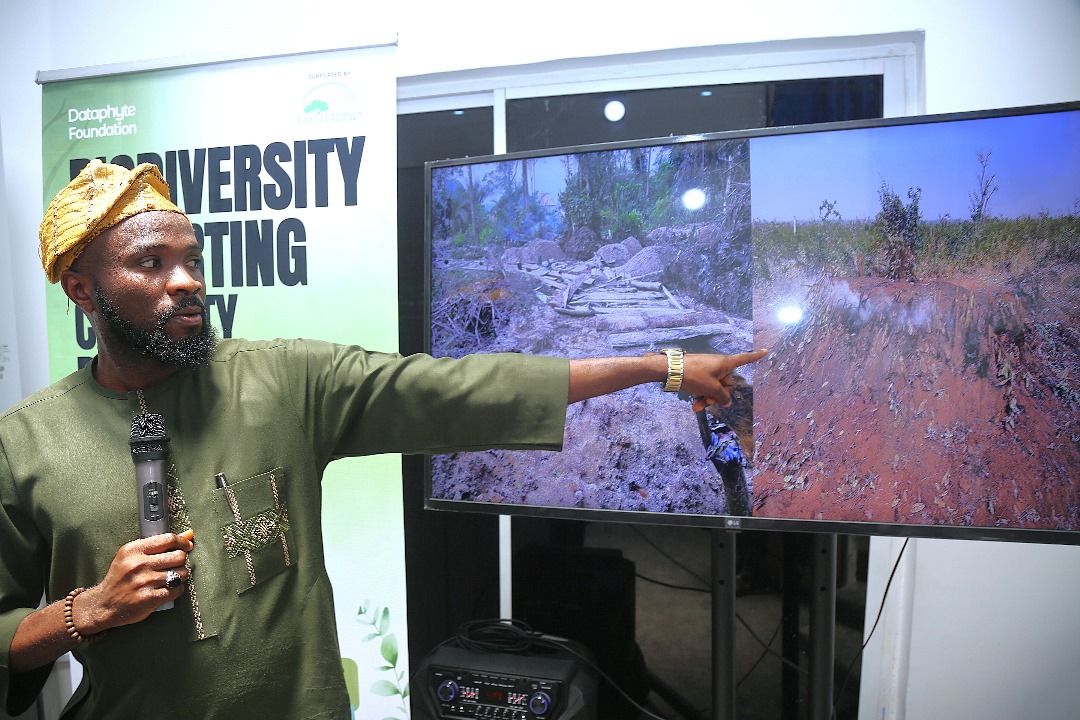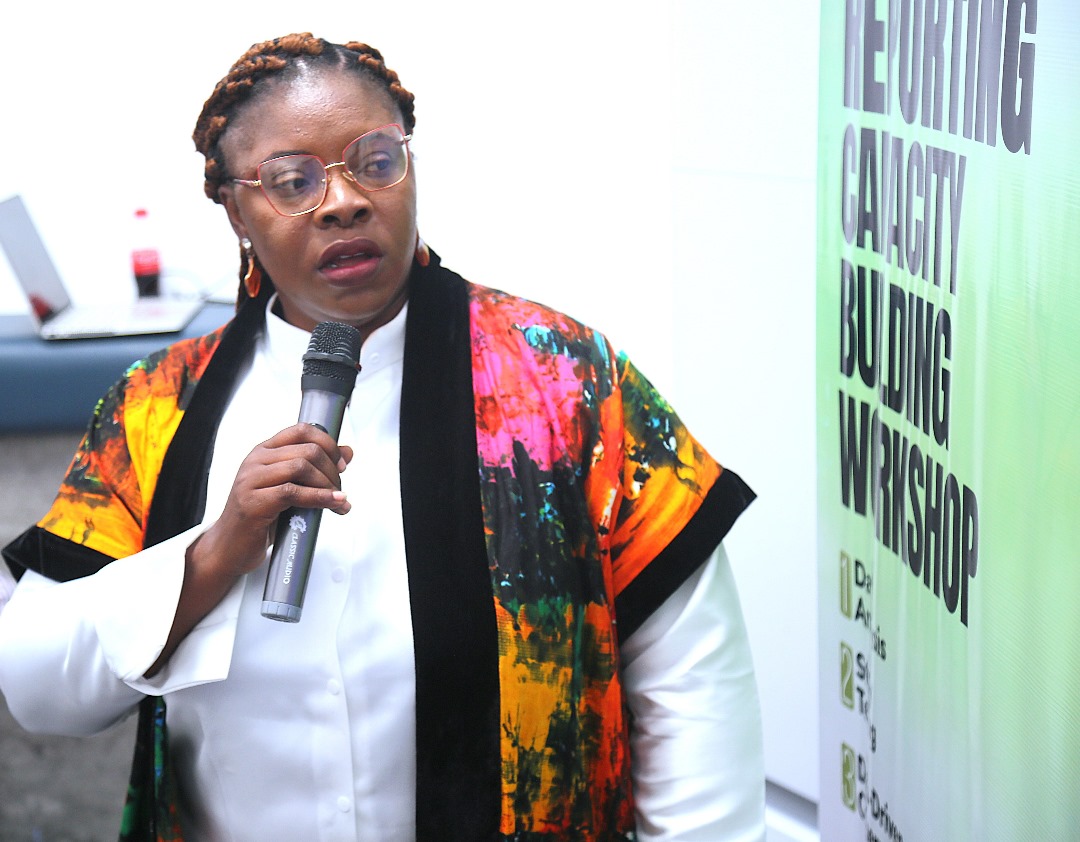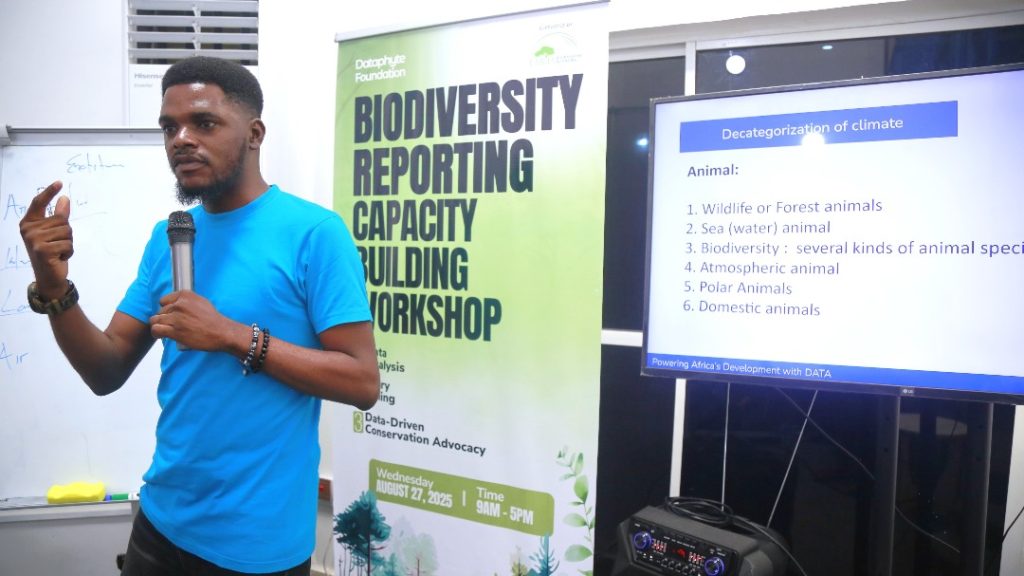Rakiya A.Muhammad
Amid a persistent decline in Earth’s biological diversity—marked by species extinctions and habitat degradation—the Dataphyte Foundation gathered its Biodiversity Reporting fellows for an intensive capacity-building programme. The aim: to empower journalists to craft compelling stories that inspire action and influence policy.
Abdulkareem Mojeed of Premium Times provided actionable steps for journalists to spotlight Nigeria’s biodiversity challenges, including deforestation, oil spills, poaching, climate change, and regulatory shortcomings.
Unearthing Stories That Matter
Mojeed challenged journalists to dig beneath the surface. He urged them to investigate how shifts in biodiversity ripple into everyday lives. Think about resource conflicts, grassroots conservation heroes, or how biodiversity debates influence national policies.
He advised them to craft human-centred narratives—showing how livelihoods, health, and culture are intertwined with the fate of nature —and emphasized that stories rooted in real people resonate most deeply.
The trainer pressed for solid evidence—reliable statistics, reports, and impactful visuals — to illustrate the impacts of biodiversity. He encouraged highlighting innovative community solutions and urgent policy gaps needing attention.
“Show real-world effects of biodiversity loss in communities, highlight local efforts to protect ecosystems, and include stories from people living with biodiversity changes,” he asserted.
And don’t forget the big picture: link local tales to international commitments, such as the SDGs, COP agreements, and the Convention on Biological Diversity. Stories that demonstrate how policies shape ecosystems—and, in turn, lives—are powerful catalysts for change.
He wrapped up with a compelling quote from Okey Ndibe: “A story to be told never forgives silence”—a reminder that every story left untold is a chance lost to make a difference.
Numbers with a Voice: Turning Data into Impactful Stories
Kehinde Ogunyale, Data Journalist and Media Trainer at Dataphyte, showed how numbers tell stories that matter—shaping opinion, influencing policy, and verifying truth.
“Using data, the task shifts focus from being the first to report to being the one telling citizens what a certain development might actually mean.”

Mastering the Art of Framing
Ogunyale pointed out that storytelling isn’t just about facts—it’s about framing.
“How you tell your story matters. That is, “setting-agenda” is within the confines of storytelling,” he elucidated.
“This means a careful selection of “Who”, “What”, “Where”, “When”, “Why”, and “How” would drive the narrative of your report. He noted that story elements selected or omitted shape perception and can inspire action.
“That’s why storytelling isn’t just about reporting facts; it’s about constructing meaning. A well-framed narrative doesn’t just inform—it engages, persuades, and drives impact.”
Ogunyale urged journalists to craft narratives that engage, persuade, and inspire change, making every story a strategic tool.
Themes That Spark Action
The Media Trainer highlighted stories about human threats, policy failures, community resilience, trafficking, and climate impacts—hotspots of hope and despair.
Stories about resource conflicts, illegal activities, and community adaptations reveal the raw realities of biodiversity loss—and the urgent need for solutions.
Beyond the Facts: Connecting the Dots
Ogunyale called for stories that address policy loopholes, legal challenges, resource commercialization, and the direct impacts on livelihoods, such as migration, displacement, and economic stability.

Bridging Conservation and Public Awareness
Dr. Stella Egbe of the Nigerian Conservation Foundation underscored the media’s power to shift behaviours and spark societal change.
“Impacts of environmental threats on communities, the economy, or individuals from the media can potentially drive behavioural change and the adoption of sustainable lifestyles across boards,” Stella stated.
Stella highlighted that citizens are often unaware of conservation policies and laws. The media has a responsibility to reorient the public through targeted messaging.
She advocated for integrating data-driven advocacy beyond technical circles, ensuring that conservation issues reach mainstream audiences and influence policy.
Driving Policy and Behavioural Change
“This forum provides the platform to drive a nexus between technical conservation and communicating key outputs to drive policy change and behavioural change on a national scale,” she concluded.
“The media has a responsibility to share data-driven, evidence-based stories on biodiversity loss, ecosystem degradation, and harmful environmental practices, especially in biodiversity-rich areas, to inform the public and drive change “
Driving the Conservation Agenda
The message from all was clear: Journalists can turn silent ecosystems into voices for action. Each article, photo, and report can spark a path to a more biodiverse future.


